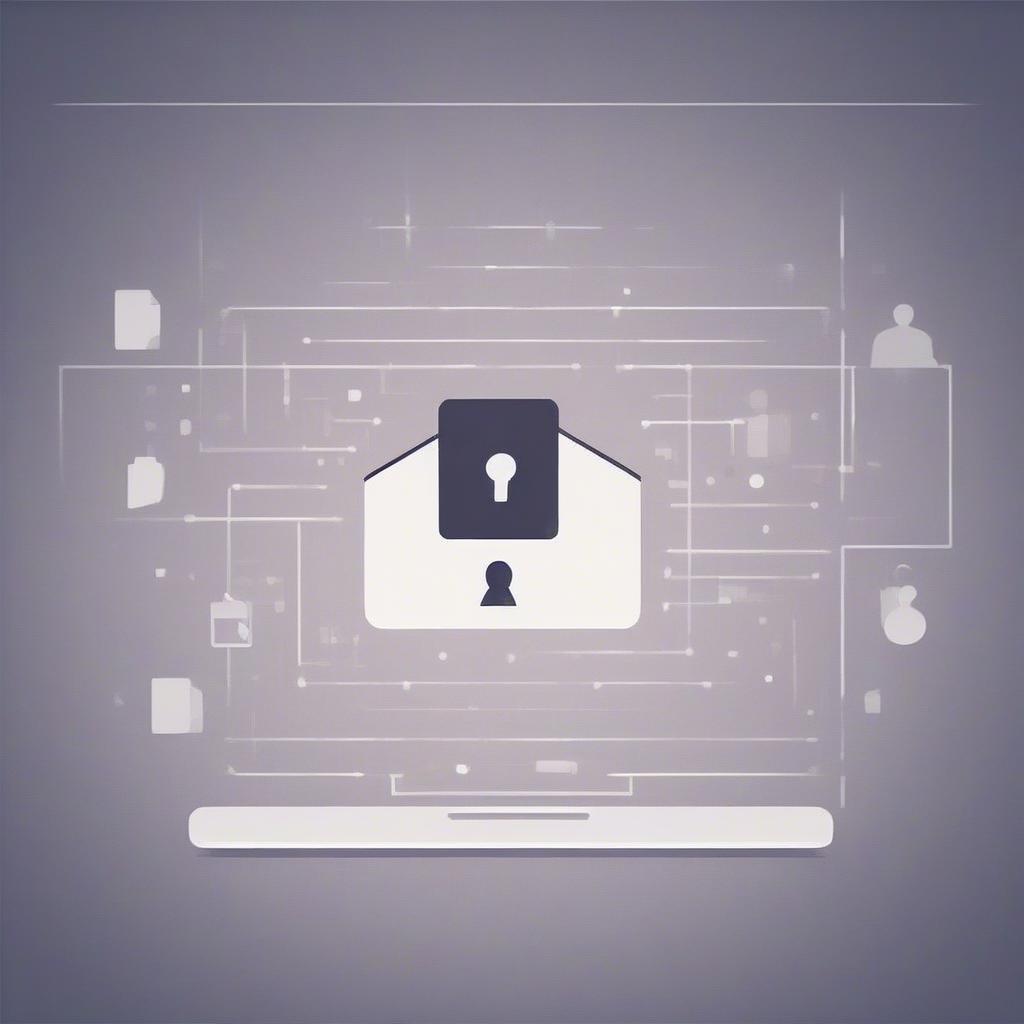
The vibrant world of event planning thrives on creativity, meticulous organization, and flawless execution. But behind the dazzling events and smiling faces lies a critical asset: data. From client contact information and financial details to vendor contracts and attendee lists, your event planning business is a treasure trove of valuable data. Failing to protect this data can lead to devastating consequences, ranging from financial losses and reputational damage to legal repercussions. That’s why prioritizing data security and cybersecurity is non-negotiable.
Why Data Security is Paramount for Event Planners
Think of your data as the lifeblood of your business. Without it, you can’t function effectively. Here’s why safeguarding it is crucial:
Protecting Client Privacy
- Building Trust: Clients entrust you with their personal information, including names, addresses, payment details, and event preferences. Protecting this data is paramount to building and maintaining trust, the bedrock of any successful event planning business.
- Avoiding Legal Issues: Data breaches can lead to severe legal penalties under regulations like GDPR, CCPA, and other data privacy laws. Compliance is not optional; it’s a legal requirement.
- Preserving Reputation: News of a data breach can quickly tarnish your reputation, leading to lost clients and negative publicity. A damaged reputation is difficult and costly to repair.
Securing Financial Information
- Preventing Fraud: Your business handles sensitive financial data, including credit card numbers and bank account details. Robust security measures are essential to prevent fraud and financial losses.
- Maintaining Financial Stability: A successful cyberattack can disrupt your business operations, leading to significant financial losses and potentially jeopardizing the stability of your company.
- Protecting Vendor Relationships: Securely managing vendor contracts and payment information is crucial for maintaining strong relationships and ensuring timely payments.
Ensuring Business Continuity
- Maintaining Operational Efficiency: Data loss can cripple your business, disrupting your workflow and hindering your ability to plan and execute events effectively.
- Safeguarding Intellectual Property: Your business may possess proprietary information, such as event planning templates, client databases, and marketing strategies. Protecting this intellectual property is crucial for maintaining your competitive edge.
- Disaster Recovery: Having a robust data backup and recovery plan ensures that you can quickly restore your data in the event of a disaster, whether it’s a cyberattack, natural disaster, or human error.
Understanding the Risks: Common Cybersecurity Threats Facing Event Planning Businesses
Knowing your enemy is half the battle. Event planning businesses face a variety of cybersecurity threats, including:
Phishing Attacks
- What it is: Phishing attacks involve deceptive emails, text messages, or phone calls designed to trick you into revealing sensitive information, such as passwords or credit card numbers.
- Why it’s a threat: Event planners often communicate with a wide range of vendors, clients, and attendees, making them vulnerable to phishing attacks. A single click on a malicious link can compromise your entire system.
- Example: An email pretending to be from a trusted vendor, asking you to update your payment information via a fake website.
Malware Infections
- What it is: Malware includes viruses, worms, and Trojan horses that can infect your computer systems, steal data, and disrupt your operations.
- Why it’s a threat: Malware can be spread through infected email attachments, malicious websites, or compromised software.
- Example: Downloading a free event planning template from an untrusted source that contains a virus.
Ransomware Attacks
- What it is: Ransomware encrypts your files and demands a ransom payment in exchange for the decryption key.
- Why it’s a threat: Ransomware attacks can cripple your business, preventing you from accessing critical data and disrupting your ability to plan and execute events.
- Example: A ransomware attack that encrypts your client database, making it impossible to access contact information, event details, and payment records.
Data Breaches
- What it is: A data breach occurs when unauthorized individuals gain access to your sensitive data.
- Why it’s a threat: Data breaches can result in financial losses, legal penalties, and reputational damage.
- Example: A hacker gains access to your server and steals client credit card information.
Insider Threats
- What it is: Insider threats come from employees, contractors, or other individuals who have authorized access to your systems and data.
- Why it’s a threat: Insider threats can be unintentional (e.g., accidental data leakage) or malicious (e.g., intentional data theft).
- Example: An employee accidentally shares a spreadsheet containing client contact information with an unauthorized third party.
Building a Fort Knox: Practical Strategies for Data Security
Now that you understand the risks, let’s explore practical strategies for securing your data.
1. Implement Strong Passwords and Multi-Factor Authentication (MFA)
- Why it’s important: Strong passwords and MFA are the first line of defense against unauthorized access.
- How to do it:
- Password complexity: Require employees to use strong passwords that are at least 12 characters long and include a combination of uppercase and lowercase letters, numbers, and symbols.
- Password management: Use a password manager to securely store and manage passwords.
- Regular password changes: Encourage employees to change their passwords regularly, at least every 90 days.
- MFA: Enable MFA on all accounts that support it, including email, cloud storage, and social media. MFA requires users to provide a second form of authentication, such as a code sent to their mobile phone, in addition to their password.
- Example: Using a password manager like LastPass or 1Password to generate and store strong passwords for all your accounts.
2. Secure Your Network
- Why it’s important: A secure network is essential for protecting your data from unauthorized access.
- How to do it:
- Firewall: Implement a firewall to protect your network from external threats.
- Wi-Fi security: Use a strong password for your Wi-Fi network and enable WPA3 encryption.
- VPN: Use a virtual private network (VPN) when connecting to public Wi-Fi networks.
- Network segmentation: Segment your network to isolate sensitive data from less critical systems.
- Example: Setting up a firewall to block unauthorized access to your network and using a VPN when working from a coffee shop.
3. Protect Your Devices
- Why it’s important: Protecting your devices from malware and unauthorized access is crucial for data security.
- How to do it:
- Antivirus software: Install and regularly update antivirus software on all devices.
- Software updates: Install software updates promptly to patch security vulnerabilities.
- Device encryption: Encrypt your hard drives to protect data in case of theft or loss.
- Mobile device management (MDM): Use MDM software to manage and secure mobile devices used for business purposes.
- Example: Installing McAfee or Norton antivirus software on all computers and mobile devices and enabling encryption on laptops and smartphones.
4. Educate Your Employees
- Why it’s important: Employee education is critical for preventing data breaches and ensuring that employees understand their role in data security.
- How to do it:
- Security awareness training: Provide regular security awareness training to employees on topics such as phishing, malware, and password security.
- Data security policies: Develop and enforce data security policies that outline acceptable use of company resources and data handling procedures.
- Incident response plan: Create an incident response plan that outlines the steps to take in the event of a data breach.
- Example: Conducting monthly security awareness training sessions for employees and providing them with a written data security policy.
5. Implement Data Backup and Recovery
- Why it’s important: Data backup and recovery is essential for ensuring that you can quickly restore your data in the event of a disaster.
- How to do it:
- Regular backups: Back up your data regularly, at least daily.
- Offsite backups: Store your backups offsite, in a secure location or cloud storage service.
- Backup testing: Test your backups regularly to ensure that they can be restored successfully.
- Example: Using a cloud backup service like Backblaze or Carbonite to automatically back up your data to a secure offsite location.
6. Secure Your Cloud Storage
- Why it’s important: Many event planning businesses use cloud storage services to store and share data. Securing your cloud storage is crucial for protecting your data from unauthorized access.
- How to do it:
- Strong passwords: Use strong passwords for your cloud storage accounts.
- MFA: Enable MFA on your cloud storage accounts.
- Access control: Limit access to your cloud storage folders and files to only those who need it.
- Encryption: Encrypt your data before uploading it to the cloud.
- Example: Using Google Drive or Dropbox with MFA enabled and restricting access to sensitive client files to only authorized employees.
7. Secure Your Email Communications
- Why it’s important: Email is a common target for cyberattacks. Securing your email communications is essential for protecting your data from phishing and malware.
- How to do it:
- Spam filters: Use spam filters to block unwanted email.
- Email encryption: Use email encryption to protect the confidentiality of your email messages.
- Phishing awareness: Train employees to recognize and avoid phishing emails.
- Example: Using Gmail or Outlook with spam filters enabled and educating employees about phishing tactics.
8. Secure Your Website
- Why it’s important: Your website is a public-facing platform that can be vulnerable to cyberattacks. Securing your website is essential for protecting your data and maintaining your reputation.
- How to do it:
- SSL certificate: Install an SSL certificate to encrypt communication between your website and visitors.
- Website security scanner: Use a website security scanner to identify and fix vulnerabilities.
- Content management system (CMS) updates: Keep your CMS and plugins up to date with the latest security patches.
- Strong passwords for CMS: Use strong passwords for your CMS admin accounts.
- Example: Installing an SSL certificate on your website and using a website security scanner like Sucuri to identify and fix vulnerabilities.
9. Implement a Data Retention Policy
- Why it’s important: A data retention policy outlines how long you will store different types of data and when you will delete it. This helps you comply with data privacy regulations and reduce the risk of data breaches.
- How to do it:
- Identify data types: Identify the different types of data you collect and store, such as client contact information, financial data, and vendor contracts.
- Determine retention periods: Determine how long you need to retain each type of data to comply with legal and business requirements.
- Document your policy: Document your data retention policy in writing and communicate it to your employees.
- Regularly review and update: Regularly review and update your data retention policy to ensure that it remains compliant with changing regulations.
- Example: Creating a data retention policy that specifies that client contact information will be deleted after three years, unless the client requests otherwise.
10. Conduct Regular Security Audits
- Why it’s important: Regular security audits help you identify vulnerabilities and weaknesses in your security posture.
- How to do it:
- Internal audits: Conduct internal security audits regularly to assess your security controls.
- External audits: Hire a third-party cybersecurity firm to conduct external security audits.
- Vulnerability scanning: Use vulnerability scanning tools to identify security vulnerabilities in your systems and applications.
- Penetration testing: Conduct penetration testing to simulate a real-world cyberattack and identify weaknesses in your defenses.
- Example: Hiring a cybersecurity firm to conduct a penetration test of your network and applications.
Templates and Tools for Event Planning Data Security
To make data security easier, consider utilizing these templates and tools:
- Data Security Policy Template: Outline your company’s data security procedures. Many templates are available online; customize it to fit your specific needs.
- Incident Response Plan Template: Document the steps to take in case of a data breach.
- Password Manager: (LastPass, 1Password)
- Antivirus Software: (McAfee, Norton, Bitdefender)
- Cloud Backup Service: (Backblaze, Carbonite)
- Website Security Scanner: (Sucuri, SiteLock)
- Data Retention Policy Template: Helps you define data storage and deletion procedures.
Learn Business: Your Partner in Event Planning Success
At Learn Business, we understand the unique challenges and opportunities facing event planning businesses. We offer a range of resources and templates designed to help you streamline your operations, improve your data security, and achieve your business goals.
- Business Plan Templates: Craft a winning business plan that outlines your strategic goals and financial projections.
- Marketing Plan Templates: Develop a comprehensive marketing plan to attract new clients and grow your business.
- Financial Templates: Manage your finances effectively with our easy-to-use financial templates.
- Event Planning Contract Templates: Protect your business with legally sound event planning contracts.
By leveraging our resources and expertise, you can focus on what you do best: creating unforgettable events.
Staying Ahead of the Curve: The Future of Cybersecurity in Event Planning
The cybersecurity landscape is constantly evolving. It’s crucial to stay informed about the latest threats and best practices to protect your data. Here are some trends to watch:
- AI-Powered Cybersecurity: Artificial intelligence (AI) is being used to develop more sophisticated cybersecurity tools that can detect and respond to threats in real-time.
- Zero Trust Security: Zero trust security assumes that no user or device is trusted by default and requires strict verification before granting access to resources.
- Cloud Security: As more event planning businesses move their data and applications to the cloud, cloud security will become increasingly important.
- Data Privacy Regulations: Data privacy regulations like GDPR and CCPA are becoming more stringent, requiring businesses to implement robust data security measures.
By staying informed about these trends and adapting your security practices accordingly, you can ensure that your event planning business remains protected from cyber threats.
Conclusion: Prioritizing Data Security for Long-Term Success
In the fast-paced and competitive world of event planning, data security is not just a technical issue; it’s a business imperative. By implementing the strategies outlined in this article, you can protect your clients’ privacy, secure your financial information, and ensure the long-term success of your business. Don’t wait until it’s too late. Take action today to build a robust data security program that protects your most valuable asset: your data. Remember, a proactive approach to data security and cybersecurity is the cornerstone of a thriving event planning business.



Leave a Reply